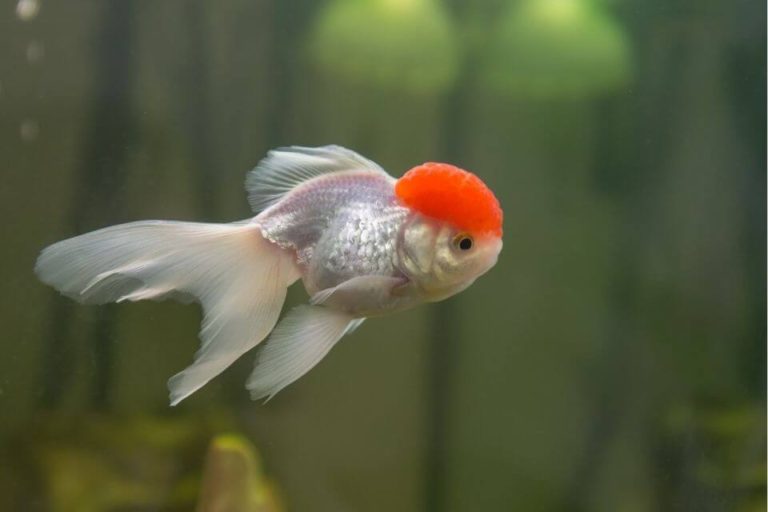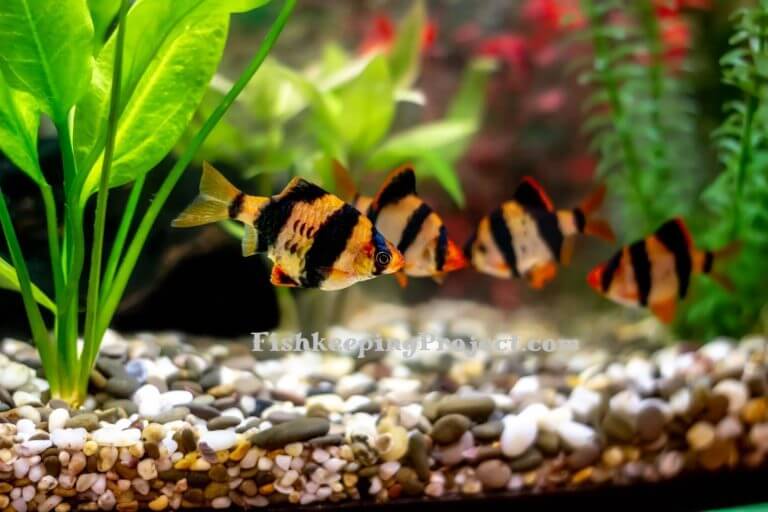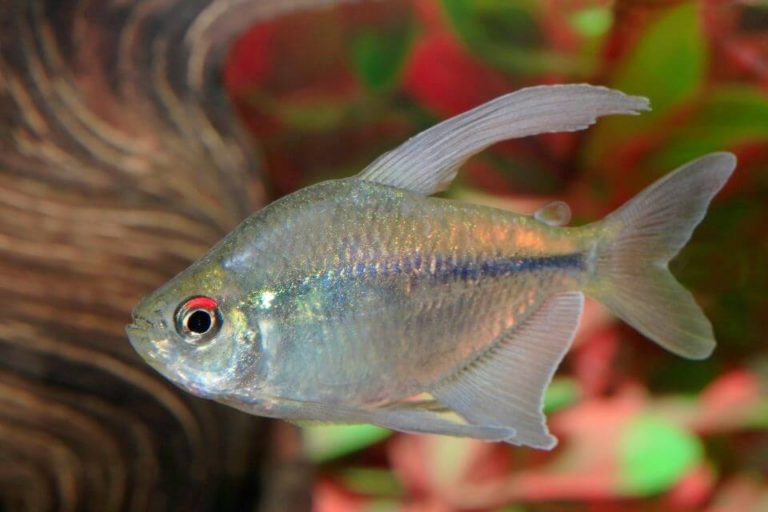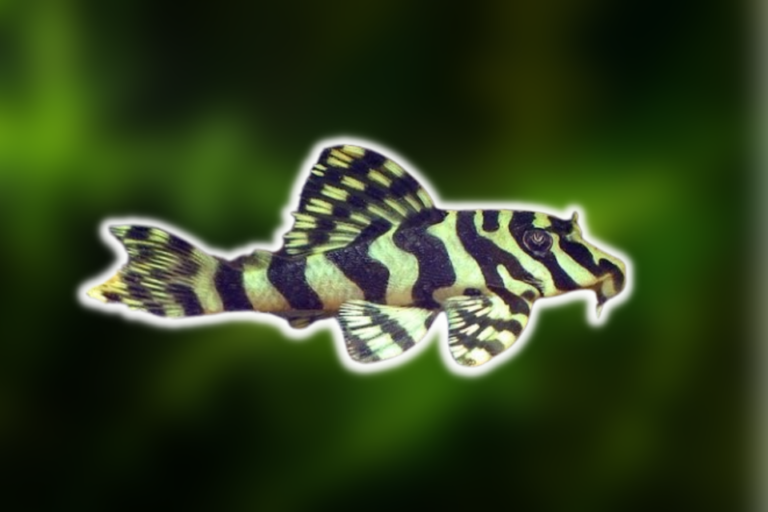Ultimate Lemon Tetra Care Guide: Tank Setup, Mates, Diet and Breeding
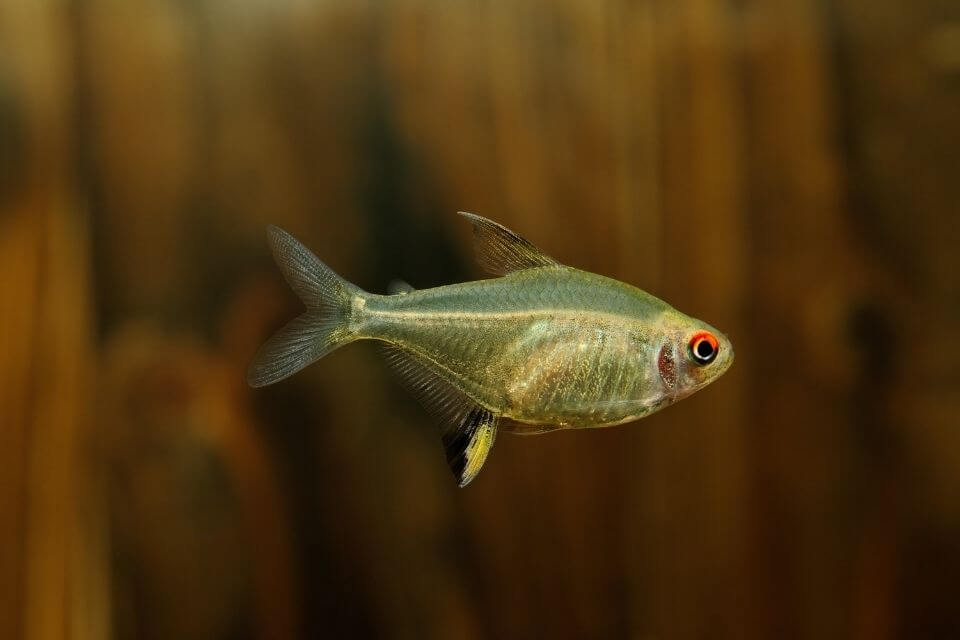
A Lemon Tetra is an ornamental freshwater fish species that live in tropical waters whose origin is South America. For a long time now, it has been an ornamental aquarium fish that has turned out to be most people’s favorite since its introduction to the aquarium in 1932.
As its name suggests, it has a relatively transparent body that portrays a lemony overall color. For the Lemon Tetra fish to fair on well, some conditions must be met, including feeding them the proper diet and favorable water conditions.
| Quick Facts: | |
|---|---|
| Common Names : | Lemon Tetra |
| Origin : | Lower parts of Amazon River in South America |
| Family : | Characidae |
| Scientific Name : | Hyphessobrycon pulchripinnis |
| Care Level : | Very Easy |
| Temperament : | Peaceful |
| Social : | Schooling fish |
| Diet : | Omnivores |
| Size (average) : | Up to 2 inches |
| Lifespan : | 4 to 8 years |
| Breeding : | Egg layer |
| Minimum Tank Size: | 20 gallons |
| Tank Environment : | Freshwater , Sandy or gravel substrate, Lot of Plants, Lot of hiding places, Rocks |
| Temperature : | 72°F – 82°F (22 – 27 °C) |
| Water Hardness : | 3 - 20 dKH |
| Water pH Level : | 5.0 - 8.0 |
Overview of Lemon Tetra
Scientific name: Hyphessobrycon pulchripinnis
Regardless of its small size, the Lemon Tetra could make a huge visual impact on your tank. It was first introduced to the pet market trade in the early 1930s. Most aquarists prefer to use it because of its affordable prices and the easy maintenance routine, not forgetting its alluring site.
It can thrive in a school which is where it does well since they are more comfortable. The Lemon Tetras inhibit some parts of the Amazon River and live in narrow streams near the Tapajos River in Brazil. It is very popular because of its Yellow coloration.
The fish is an omnivorous animal, and therefore it is easy to find their food. The average size of a mature Lemon Tetra is two (2) inches. The estimated lifespan of this fish species ranges from 4 to 8 years.
The fish can only live for the estimated period if the conditions favoring its growth are met. It is easy to detect when the Lemon Tetra fish is sick because it is reflected in their eyes, where you notice some change because of the fading of the color.
The male and female Lemon Tetras have some differences. Especially in the physical appearances of a female fish in the breeding season. The Lemon Tetra has a known reputation for being friendly and very peaceful, which is why it is referred to as a very friendly animal.
Origin, Distribution, and Availability
The Lemon Tetra can be found in almost any aquarium pet shop, and like in most cases, most people are fond of it but know nothing about its origin or how it came into existence.
The description of the fish was vague until 1980 when it was clearly described, and its source was found by Gery, who found out that in the lower Amazon is where the natural range of species lie.
Specifically in the lower and middle parts of Tapajos River between Itaituba and Jacare Acangs. Other origins are said to be the Tocantins River and Xingu River. Before the new Lemon Tetra mutation, the old ones called the ancestors known to have originated from Bolivia in Germany.
They differ from the new ones because of the brilliant orange color and lack of the black border of the anal fins. These fish species are widely distributed to most aquariums worldwide, mainly contributed to by the elementary modes of maintaining them.
Because of this, many people prefer keeping it as a pet since it serves aesthetic purposes and the buying price is relatively low. All these factors make Lemon Tetra for sale in most pet shops to anyone interested in purchasing it.
Lemon Tetra Typical Behaviour
Lemon Tetras prefer staying in a school just like other Tetras, which causes anxiety and uneasiness and can also lead to the fish being reserved. Later on, these conditions could cause health problems, which are better avoided than waiting to start looking for the cure.
It is advisable to keep six (6) lemon Tetra fish together in a school or, better still, (12) twelve of them if there is space available in your tank. The fish explore in large groups, and at some point, one could notice aggression among the males as they show off trying to impress and court the females, and all these at times lead to minor disputes among the species.
They are schooling fish and can sometimes be very entertaining to look at as they go about their day-to-day activities. They like swimming too, which is what they spend a large part of their day doing.
A behavior they have that surprises many is that the parents are always tempted to feed on the eggs after they are laid. For this reason, the parents are kept away from the eggs immediately after laying them.
Appearance, Colors, and Special Markings
A Lemon Tetra is appealing to look at because of its beautiful appearance. Like other Tetra species, Lemon Tetra is diamond-shaped, but the distinction comes in with the lemons having a deeper and tight body. It is commonly referred to as a diamond.

An adult specimen has a translucent yellow with a glow emanating from the scales. There are marks of black and yellow on the dorsal and anal fin of the fish. A glass-like appearance and a black outer margin are the physical characteristics of the anal fin, not forgetting the anterior three rays that are intense with an acrylic lemon yellow color.
Unlike the anal fin, there is nothing much to describe the dorsal fin, which is generally black with a yellow patch. The tail and pelvic fins are hyaline, but the yellow color intensifies and has black posterior edges for the alpha males.
The fish’s eye could be used to indicate the health of the fish since the upper iris has an opaque red, an assurance of good health, but an alarm is raised when the opaque red color starts to fade since this indicates the presence of a severe illness.
Lemon Tetra Size
An adult Lemon Tetra size has an average length of two (2) inches. It means that the Lemon Tetra size can only grow up to 2 inches in length. The relatively small size is convenient because it consumes less space in the aquarium, which is advantageous to the aquarist since they can keep many Lemon Tetras in a relatively small tank.
The small size creates a streaking color effect complementing the beauty of the aquarium.
Lifespan of Lemon Tetra
When healthy, a Lemon Tetra is expected to live for four (4) to eight (8) years in captivity. But there are instances where the fish has outlived the expectations and has lived for more than eight years, which only happens if the fish is under good care and all conditions necessary for its survival are met.
On the other hand, there are occasions where the fish has died prematurely before reaching the age of four years. Death in most cases is caused by poorly maintained habitats, which could have led to infections or other diseases, ultimately causing its short-lived lifespan.
How Do You Take Care Of A Lemon Tetra?
It is effortless to take care of a Lemon Tetra since it is very flexible as it has the ability to live in a wide range of conditions. You only have to make sure that you provide them with the proper diet and favorable living environment.
The environment is created advantageous by taking time to follow recommendations given when setting up a tank, including the appropriate water temperatures and the recommended water PH.
There are high recommendations to beginners on considering making a Lemon Tetra their fish of choice.
Aquarium Care and Conditions For Blood Tetra
Setting up a tank for the Lemon Tetras Is quite an easy task as there are very few conditions to be met. One is supposed to ensure that there is enough space for the Lemon Tetra to swim. The Lemon Tetras tend to be more comfortable in shoals, and it is advisable to keep them in groups.
Another requirement is ensuring that there is proper aeration and filtration. A hang-on filter is recommended as it helps add some current in the tank apart from helping in the filtration process. There also should be lighting in the tank.
– Lemon Tetra Tank Size
Since the Lemon Tetras are a small species, a very large tank would be unnecessary. However, there should still be adequate space left for easy movement of the species, preferably six. A 20 gallons tank size would do for a small group of fish.
If someone is interested in keeping a large number of Tetra fish, it is good to consider looking for a larger tank.
– Tank Setup
The best way to set up a tank is by heavily planting it since it resembles the species’ natural habitat, helping it familiarise itself with the environment. This enhances the comfort of the Lemon Tetra. The planting is preferred because it allows the Lemon Tetras to display more vivid coloration and show their full splendor.
LED lighting should be relatively moderate; otherwise, intense lighting would make the fish as if they are washed out. The motion of water in the tank should be mild.
A traditional filter is recommended since it suspends air bubbles as well as conducts the filtration process. The tank should also be furnished with plant thickets and some companions inside, such as small herbs.
The tank should be well decorated to supplement the splendor of the Lemon Tetras. Therefore spending more time setting up the right environment for the species is essential.
There are some cases where the Lemon Tetras lose their color in poorly decorated tanks, which is very unfortunate since their sole purpose is to complement the look of a place by adding more beauty.
– Water Conditions and Parameters
Lemon Tetras are flexible enough to live in a wide range of tank conditions, but it is essential to provide them with the required conditions for best results, including a prolonged lifespan for the fish.
The fish originate from places with shallow streams and soft clean water, which is one of the required water parameters. The water is required to be soft and DE chlorinated.
A temperature range of 72 °F to 82 °F (22 – 27 degrees Celsius) should be maintained at all times. The water should be changed regularly from time to time within a regular interval.
The acidity level of water should range between 5.8 to 8.0 pH, which is slightly acidic. Water hardness should be maintained in the range of 3 to 20 dGH.
The water needs to be regularly tested to confirm that all these conditions are in check and balanced. You might have to use an aquarium water testing kit which you can purchase online.
With all the conditions met, the health of the Lemon Tetras is boosted as most diseases are eliminated, especially those caused by stress and anxiety.
– Suitable Plants
Adding natural vegetation is highly recommended since the origin of the Lemon Tetras is known to have a wide variety of greenery in large numbers.
One of the plants used is the Java Fern because it is easy to take care of and maintain. Another plant is a Hornwort, as it can grow floating and could also be tied down. As a breeding plant, one would consider having Java Moss where the eggs would be laid on.
The plants act as hiding places for Lemon Tetras whenever they are scared, and they also act as a block from bright light hence protecting the Lemon Tetras. As you focus on ensuring the tank is densely planted, it is vital to consider the space and do it proportionally to ensure adequate swimming space left for the fish.
It is essential to mix up the plant species to achieve a natural forest feel.

Diet and Feeding For Lemon Tetra
The feeding mode for a Lemon Tetra is omnivorous, making it very easy to find suitable foods for them. This fish species prefers to feed on live foods such as bloodworms, brine shrimps, and mosquito larvae.
Other types of foods include flake foods and frozen kinds of food. You should only provide enough food to avoid wastage since the waste would be a reason for the tank conditions to deteriorate.
It is advisable to provide the fish with various foods to acquire different essential nutrients that aid in keeping the fish in good shape.
Lemon Tetra Common Diseases
If well taken care of, the Lemon Tetra is not prone to diseases. But just like other organisms, they suffer from different ailments and are usually freshwater diseases such as bacterial infections and parasitic infections.
Most of these infections can be easily treated through quarantining or administration of over-the-counter medication. One has to be very careful and observant since most ailments are contagious and can quickly spread to all species in the tank, increasing the risk of being wiped out.
To prevent the fish from being infected, it is necessary to ensure that the water filter operates efficiently and there is proper aeration in the tank.
Thankfully, in case of ailments, it is easy to detect in Lemon Tetras since the color of the upper half of the iris starts to fade, indicating the presence of a health problem. Another way to reduce the chances of the species getting sick is to make sure the water in the tank is regularly changed and tested.
How Can You Tell If A Lemon Tetra Is Male Or Female?
Most people would expect that the female Lemon Tetras are more colorful compared to the males. Still, opposite to the expectations, it is surprising that male Lemon Tetras are more colorful than female ones.
The black edge of the males can easily be spotted compared to that of the females, and they also have a more pointed dorsal fin than that of the females. The females are said to be plumper than the males.
How Do Lemon Tetra Breed?
Lemon Tetras are known to scatter their eggs and don’t portray any interest in parental care. A mature female adult can produce up to 300 eggs as it is relatively easy for the Lemon Tetras to breed, but there are cases where the females face challenges when expelling the eggs. In most cases, the eggs are laid among fine-leaved plants.
It is an interesting fact that the parents are tempted to feed on the eggs after they are laid, which is unlike many creatures. Because of this reason you should take parents away immediately after the eggs are laid.
The most effective and successful way to spawn the Lemon Tetra fish is in groups where the ratio of female to male one to four (1:4), respectively. Then provide them with favorable conditions supporting growth and then watch as nature takes its course, gradually marking the onset of spawning.
The breeding tank should be separate from the normal one to keep the parents away. It is necessary to have Spawning Mats or Java Moss for the females to lay eggs on in the breeding tank.
Proper filtration and aeration are a basic necessity during this period. The eggs can hatch after a period of 24 hrs, and the fry can swim five days later.
Lemon Tetra Tank Mates
A Lemon Tetra being a peaceful type of species, it is advisable to look for friendly mates with the aim of maintaining peace. They get along with a wide variety of tank mates, but it is vital to keep them away from sizeable aggressive fish, which would intimidate them or, even worse, feed on them.
This is because of the small size of the Lemon Tetras, which makes them vulnerable as they can easily be fed on. Similarly sized fish with a peaceful temperament are preferred. Some of the fish that can be used as mates are Corydoras and Otocinclus Catfishes.
These fish are few examples that can be used as Lemon Tetras tank mates:
- Silver Tip Tetra
- Bloodfin Tetra
- Rummy Nose Tetra
- Glowlight Tetra
- Ember Tetra
- Pygmy Corydoras
- Galaxy Rasbora
- Chili Rasbora
- Least Killifish
Are Lemon Tetras Aggressive?
No, they are not aggressive as long as you keep them in a group of 5 to 6 fish. This Tetra breed has very peaceful behavior by nature because of its’ tiny size.
As long as they thrive in a school, you cannot see that they act as aggressive fish. If you keep the group of 2 to 3 fish, then you will notice its aggressiveness.
Are Lemon Tetras Fin Nippers?
Lemon Tetras are not known to be fin nippers as they have a reputation of being peaceful and not aggressive. But there are cases where they are said to nip if not kept in the correct numbers; if a large number is kept in a small space where there is competition for food, the lemon Tetras turn on each other.
Can Lemon Tetras Live Alone?
It is highly discouraged for anyone to keep them alone. Because it is a friendly fish used to explore and perform most of its day-to-day activities in groups.
Making a Lemon Tetra live alone makes the fish uneasy, and it develops stress and anxiety, which can, later on, lead to diseases.
How Many Lemon Tetras Should Be Kept Together?
According to our experience, you should keep 5 to 6 fish together. It will maintain their schooling behavior that will increase the health and lifespan of your Lemon Tetra fish.
Do Lemon Tetras Go To School?
Lemon Tetras are sociable species that are friendly and do well in a community tank setup. They are used to exploring in groups, and most of their daily activities are done in groups.
Most of the time, you find them in groups which is why it is advisable to keep them in at least a group of 5 to 6 fish or, better yet, a group of 12 fish if space allows.

Can Lemon Tetras Live With Bettas?
Even though the Lemon Tetras are compatible with many species, the male Lemon Tetras shouldn’t live with Bettas. The female fish can live with the Bettas, but this rarely happens.
Final Thoughts
With resourceful knowledge about the Lemon Tetras, anyone can rear them as a pet due to the ease of taking care of them.
After going through the credible information above, one can only agree that there is more to gain than lose after making a Lemon Tetra the fish of choice for your aquarium. One of the benefits being the pinch of color it adds to your lives by playing a significant role in the aesthetic view.
To anyone thinking of being an aquarist or owning an aquarium, the Lemon Tetra fish should be top of your list as the number one preference since it is very peaceful, readily available, and easy to take care of species.



